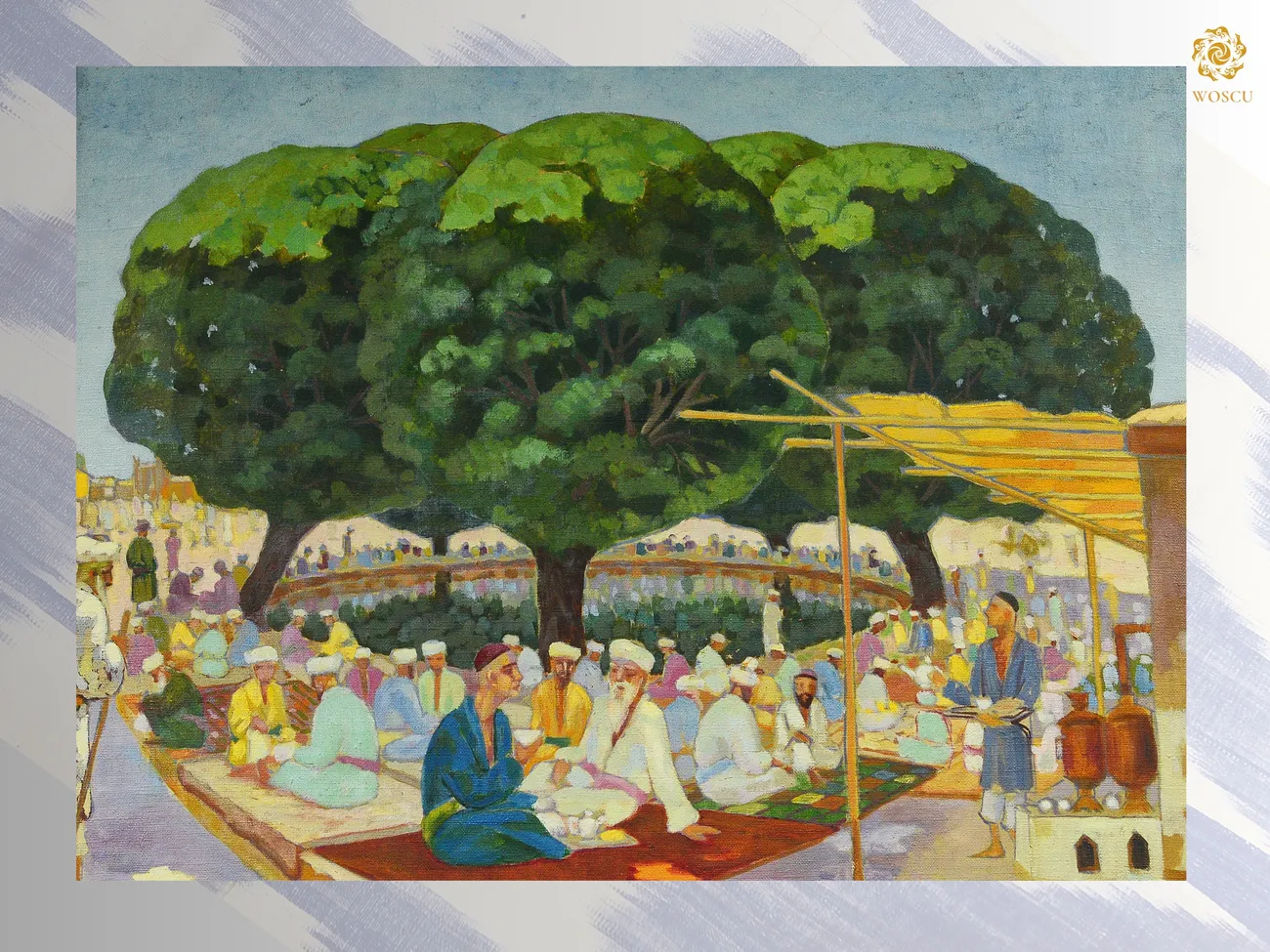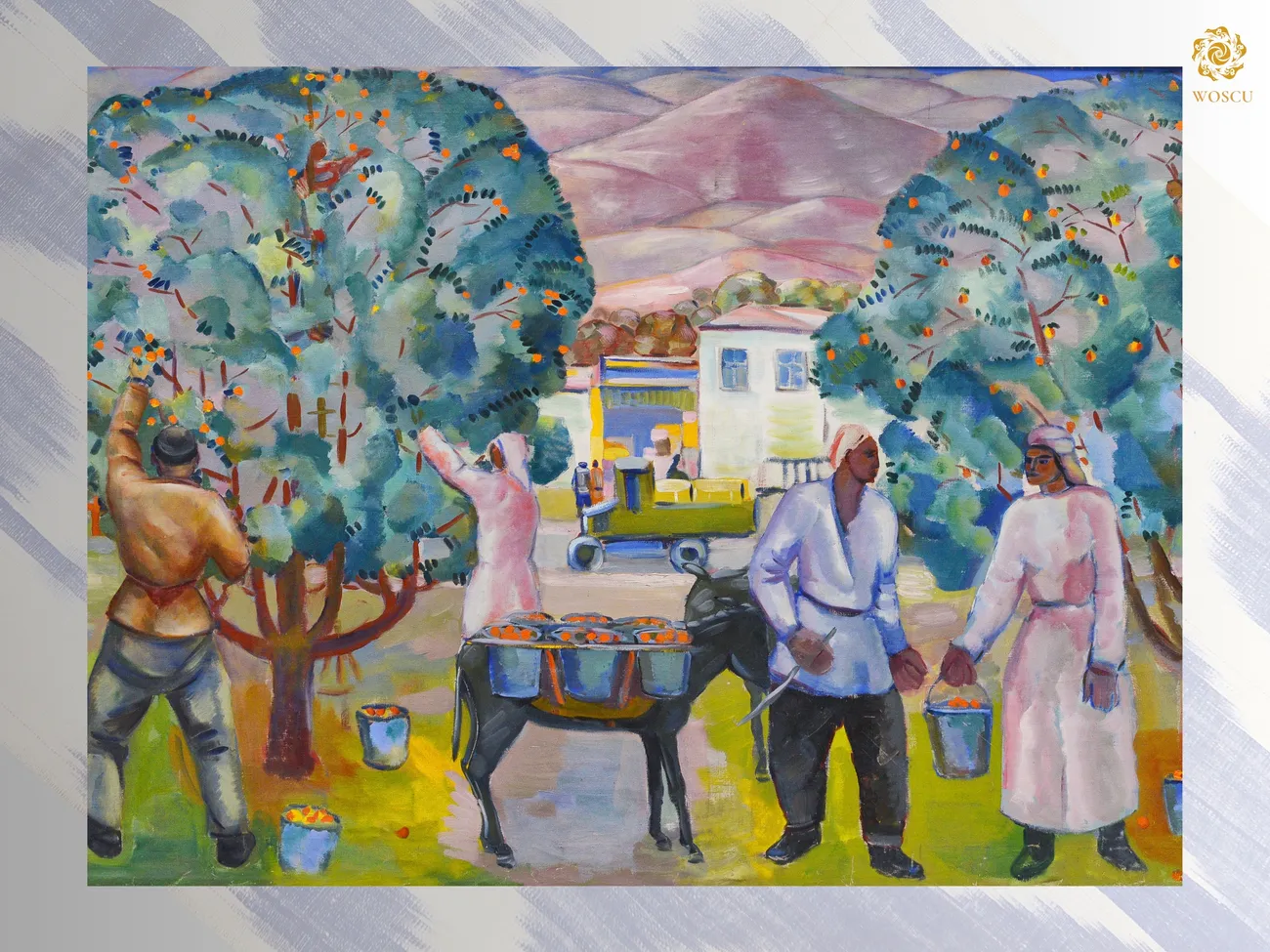Moreover, it is this quality became characteristic of the interpretation of all other styles of Uzbek fine arts of the 20th century, from cubism to postmodernism. Central Asian avant-garde was unique in that it integrated the experience and achievements of Russian avant-garde with the artistic experience of traditional Central Asian culture.
In the 1920s, artists interacted directly with traditional art, which conveyed the atmosphere of city life, everyday life, customs, and rituals that depicted the aesthetic tastes of the people, which have been developed over centuries. А. Volkov, A. Nikolaev (Usto-Mumin), O. Tatevosyan, N. Karakhan, U. Tansykbaev, N. Kashina, V. Yeremyan, E. Korovai and others understood traditional art not only as a way to learn the conditional avantgarde style, but as a continuation of the single line of artistic traditions of Central Asia.
At the base of their artistic style in the 1920s was a deep reflection on traditional Oriental poetics and the synthesis of it with areas of twentieth-century art. The points of intersection manifested themselves in the traditional artistic language, its conciseness, beauty, symbolism of images, characteristic of traditional art and manifested in a different interpretation typical of avant-garde art.
You can learn more about this topic in the book-album "The Collection of Art in the State Tretyakov Gallery" (Volume III) (Moscow, Russia) from the series "The Cultural Legacy of Uzbekistan".
The general sponsor of the project is the oilfield services company Eriell-Group.


